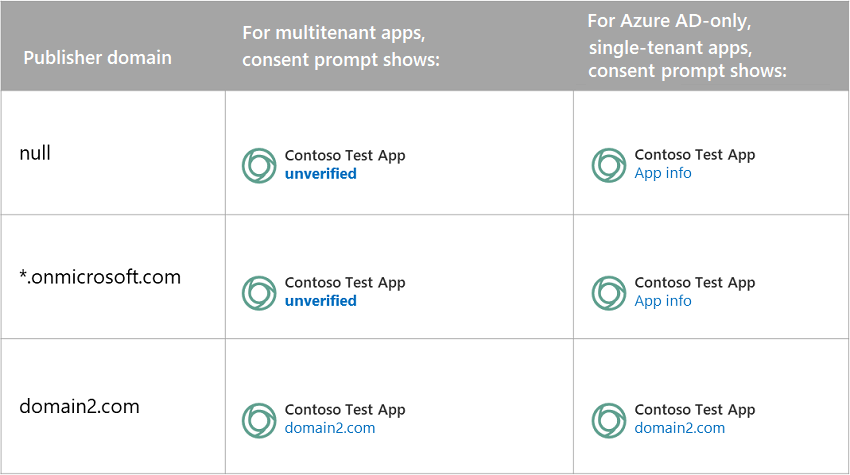How To Create A List On Domain_6 App
This browser is no longer supported.
Upgrade to Microsoft Edge to take advantage of the latest features, security updates, and technical support.
- Feedback
- Edit
Configure an application's publisher domain
- 4 minutes to read
Thank you.
An application's publisher domain is displayed to users on the application's consent prompt to let users know where their information is being sent. Multi-tenant applications that are registered after May 21, 2019 that don't have a publisher domain show up as unverified. Multi-tenant applications are applications that support accounts outside of a single organizational directory; for example, support all Azure AD accounts, or support all Azure AD accounts and personal Microsoft accounts.
New applications
When you register a new app, the publisher domain of your app may be set to a default value. The value depends on where the app is registered, particularly whether the app is registered in a tenant and whether the tenant has tenant verified domains.
If there are tenant-verified domains, the app's publisher domain will default to the primary verified domain of the tenant. If there are no tenant verified domains (which is the case when the application is not registered in a tenant), the app's publisher domain will be set to null.
The following table summarizes the default behavior of the publisher domain value.
| Tenant-verified domains | Default value of publisher domain |
|---|---|
| null | null |
| *.onmicrosoft.com | *.onmicrosoft.com |
| - *.onmicrosoft.com - domain1.com - domain2.com (primary) | domain2.com |
If a multi-tenant application's publisher domain isn't set, or if it's set to a domain that ends in .onmicrosoft.com, the app's consent prompt will show unverified in place of the publisher domain.
Grandfathered applications
If your app was registered before May 21, 2019, your application's consent prompt will not show unverified if you have not set a publisher domain. We recommend that you set the publisher domain value so that users can see this information on your app's consent prompt.
Configure publisher domain using the Azure portal
To set your app's publisher domain, follow these steps.
-
Sign in to the Azure portal.
-
If you have access to multiple tenants, use the Directory + subscription filter
 in the top menu to select the tenant in which the app is registered.
in the top menu to select the tenant in which the app is registered. -
Navigate to Azure Active Directory > App registrations to find and select the app that you want to configure.
Once you've selected the app, you'll see the app's Overview page.
-
Under Manage, select the Branding.
-
Find the Publisher domain field and select one of the following options:
- Select Configure a domain if you haven't configured a domain already.
- Select Update domain if a domain has already been configured.
If your app is registered in a tenant, you'll see two tabs to select from: Select a verified domain and Verify a new domain.
If your domain isn't registered in the tenant, you'll only see the option to verify a new domain for your application.
To verify a new domain for your app
-
Create a file named
microsoft-identity-association.jsonand paste the following JSON code snippet.{ "associatedApplications": [ { "applicationId": "{YOUR-APP-ID-HERE}" }, { "applicationId": "{YOUR-OTHER-APP-ID-HERE}" } ] } -
Replace the placeholder {YOUR-APP-ID-HERE} with the application (client) ID that corresponds to your app.
-
Host the file at:
https://{YOUR-DOMAIN-HERE}.com/.well-known/microsoft-identity-association.json. Replace the placeholder {YOUR-DOMAIN-HERE} to match the verified domain. -
Click the Verify and save domain button.
You're not required to maintain the resources that are used for verification after a domain has been verified. When the verification is finished, you can remove the hosted file.
To select a verified domain
If your tenant has verified domains, select one of the domains from the Select a verified domain dropdown.
Note
The expected Content-Type header that should be returned is application/json. You may get an error if you use anything else, like application/json; charset=utf-8:
Verification of publisher domain failed. Error getting JSON file from https:///.well-known/microsoft-identity-association. The server returned an unexpected content type header value.
Implications on the app consent prompt
Configuring the publisher domain has an impact on what users see on the app consent prompt. To fully understand the components of the consent prompt, see Understanding the application consent experiences.
The following table describes the behavior for applications created before May 21, 2019.

The behavior for new applications created after May 21, 2019 will depend on the publisher domain and the type of application. The following table describes the changes you should expect to see with the different combinations of configurations.

Implications on redirect URIs
Applications that sign in users with any work or school account, or personal Microsoft accounts (multi-tenant) are subject to few restrictions when specifying redirect URIs.
Single root domain restriction
When the publisher domain value for multi-tenant apps is set to null, apps are restricted to share a single root domain for the redirect URIs. For example, the following combination of values isn't allowed because the root domain, contoso.com, doesn't match fabrikam.com.
"https://contoso.com", "https://fabrikam.com", Subdomain restrictions
Subdomains are allowed, but you must explicitly register the root domain. For example, while the following URIs share a single root domain, the combination isn't allowed.
"https://app1.contoso.com", "https://app2.contoso.com", However, if the developer explicitly adds the root domain, the combination is allowed.
"https://contoso.com", "https://app1.contoso.com", "https://app2.contoso.com", Exceptions
The following cases aren't subject to the single root domain restriction:
- Single tenant apps, or apps that target accounts in a single directory
- Use of localhost as redirect URIs
- Redirect URIs with custom schemes (non-HTTP or HTTPS)
Configure publisher domain programmatically
Currently, there is no REST API or PowerShell support to configure publisher domain programmatically.
Feedback
How To Create A List On Domain_6 App
Source: https://docs.microsoft.com/en-us/azure/active-directory/develop/howto-configure-publisher-domain
Posted by: kellyanowbod1944.blogspot.com

0 Response to "How To Create A List On Domain_6 App"
Post a Comment